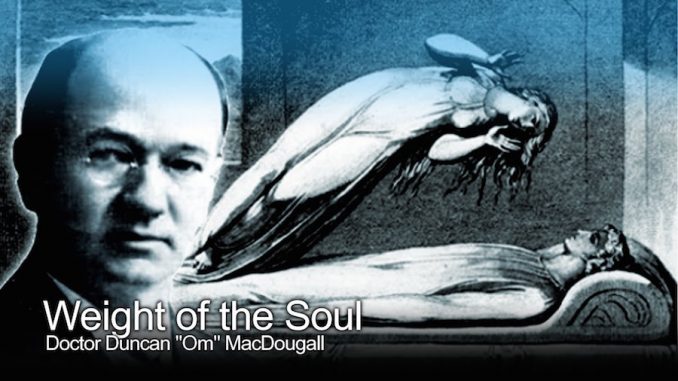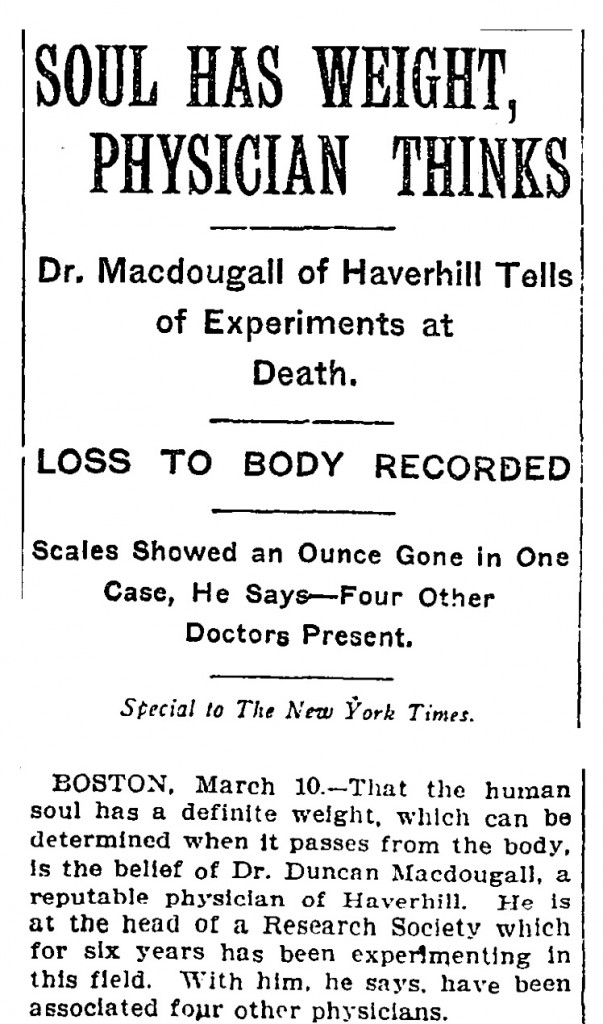
In the early 1900’s a doctor named Duncan MacDougall set up an experiment to see whether the human soul could be weighed.
He set-up a unique and macabre experiment in which he weighed the souls of terminally ill patients at the very moment of their deaths. He did this by fitting their beds with a sensitive set of beam scales, and then asked the patients to lie on the bed during their final moments of life.

BYPASS THE CENSORS
Sign up to get unfiltered news delivered straight to your inbox.
You can unsubscribe any time. By subscribing you agree to our Terms of Use
Latest Video
He recorded the exact time of each death, the exact amount of time the patient spent on the bed, as well as any changes in weight that occurred around the moment of death. He concluded that the human soul weighed three-fourths of an ounce – 21 grams.
Discovermagazine.com reports:

A Year in the Spotlight
The results of MacDougall’s study appeared in The New York Times in March 1907. The article set off a debate between MacDougall and the physician Augustus P. Clarke, who “had a field day” with MacDougall’s minuscule measurement techniques.
Clarke pointed out that at the moment of death, the lungs stop cooling the blood, causing the body’s temperature to rise slightly, which makes the skin sweat — accounting for Dr. MacDougall’s missing 21 grams. MacDougall fired back in the next issue, arguing that circulation ceases at the moment of death, so the skin wouldn’t be heated by the rise in temperature. The debate ran all the way to the end of 1907, picking up supporters on both sides along the way.
For four years, all was quiet on the MacDougall front, but in 1911 he graced The New York Time’s front page with an announcement that he’d upped the ante. This time, he wouldn’t be weighing the human soul — he’d be photographing it at the moment it left the body.
Although he expressed concern that “the soul substance might become [too] agitated” to be photographed at the moment of death, he did manage to perform a dozen experiments in which he photographed “a light resembling that of the interstellar ether” in or around patients’ skulls at the moments they died.
MacDougall himself passed away into the interstellar ether in 1920, leaving behind a small band of ardent supporters, along with a far larger group of physicians who seemed incredulous that this farce had gone on so long. Members of the public settled down on one side or the other, and the discussion fell off the radar.
Except that it never really did — at least not completely.


